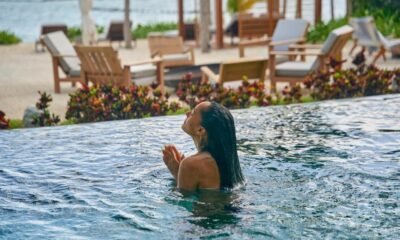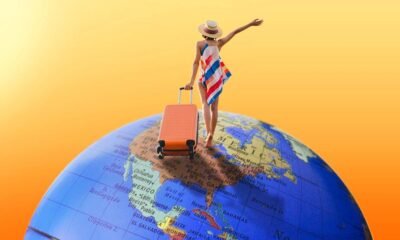Solo Travellers
6 Things to Know if You’re Considering a Solo Trip
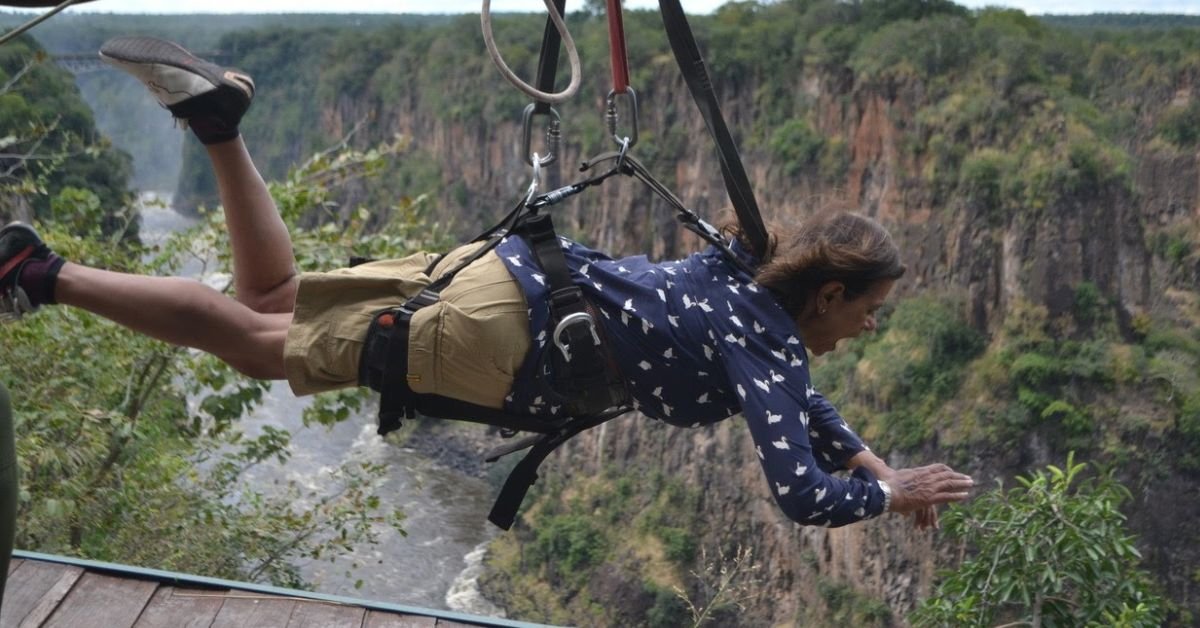
When was the last time you did something for the first time? This year, maybe go ahead and say ‘yes’ to that solo trip you’ve been relegating to the distant future. The first time can be daunting. But our time-tested travellers promise it gets better. Their suggestion: make solo travel a habit.
1. Just do it
Life happens outside your comfort zone, believes Jaipur-based Neeru Saluja (71). This advice has stood her in good stead during the last 14 years that she’s spent globetrotting from the Galapagos Islands to the Atlantic. “My husband and I always loved to travel,” Neeru explains, momentarily reliving their many rendezvous on the Vespa scooter, having breakfast in one city, lunch in another, and dinner in a third.
After her husband passed away in 2010, travel took a backseat for Neeru. But instead of being wistful about the past, she decided to reclaim her adventurous side and booked herself a solo trip — a Christmas cruise through Europe in 2014. Since then, there has been no looking back.
Advertisement
2. Help will arrive when you need it
Despite all the meticulous planning, there is bound to be a sticky moment or two during your solo expedition. This is what the years — and 50 solo adventures — have taught Chandigarh-based lawyer Shvangi Sharma (34).
When Shvangi was travelling from Kerala to Tamil Nadu by road in 2016, she recalls having forgotten the RTO permit. Years later, her takeaway from the incident isn’t the mistake, but the kindness of a police officer who stepped in to help. “When I told him about my permit issue, he called someone from the RTO on the way and got me a permit without having to visit the office. That incident fuelled my confidence for the rest of the trip,” she says.
Another solo travel aficionado, Vimal Geethanandan (30) from Andhra Pradesh, underscores the same lesson. Though Vimal has been backpacking since 2016, it hasn’t always been a breeze. Take, for instance, that time in 2021 when he contracted COVID-19 while on the road. “I was in a forest area and did not have the energy to cook for myself,” he shares. But, he adds, “The Universe is always looking out for you.” He explains how a social media follower played good Samaritan, got him medical help, and even arranged his stay at a local temple.
3. Experiment and let yourself be surprised
Snails aren’t Neeru’s favourite starter. But when in Nagaland, she went all in. This was her way of embracing the local culture. “We had snails that were brewed with herbs and served with rice beer. It is custom for the local communities to keep refilling the glasses before they run dry, and so we ate and drank for hours before we couldn’t possibly eat any more,” she explains. Travel introduces you to foods that might evade desi perception. Don’t shy away from trying them, she urges. Shed your inhibitions, she adds.
Experimenting isn’t always limited to gastronomy, we learn by watching Shvangi’s expeditions, which are almost always offbeat. They include visits to Kerala’s Kodinhi village, which is known for its unusual number of twin births, and Thrissur’s Marottichal village, which sings praises of the tea seller who reduced alcohol consumption through chess boards.
4. The rough times? They’re part of the ride
Consider setbacks a rite of passage during a solo trip. Not all of Vimal’s travels have been coloured with sunsets. He shares about days when, while caravanning, the water supply would run out as would the power, and he would be looking at a night filled with mosquitoes and rats. “But, the lonely nights, the adversities are as much a part of travel as are beaches,” he says.
Advertisement
And, there is a silver lining. The more solo trips you take, the more these unstructured moments will seem fewer and farther between. You’ll learn from mistakes, make new ones, and become adept at handling any crisis.
5. In Rome, live like the Romans. But, learn from them too
The sole purpose of travel isn’t to experience the world in all its glory but to carry souvenirs back home. And no, we aren’t talking about fridge magnets. For Neeru, these souvenirs are the learnings she gains from different cultures. At the Galapagos Islands — the world’s foremost destination for wildlife viewing — Neeru marvelled at the locals’ mindfulness towards their fauna. “There is a lot of consciousness among the citizens. If you are doing anything incorrect, they are there to point it out to you.” It was the same with Antarctica. On returning from a trip, she implements these salient ideals.
6. Don’t consign your travels to luck
You don’t need to contend with exorbitant budgets while planning your solo trip. Shvangi points out a solution — volunteering.
“There are several hostels, homestays, and hotels that need volunteers to manage daily operations, host guests, or create content,” she shares. This, along with aiding your budget, will also help you get an authentic experience. “Make a brand out of yourself,” she adds, elaborating on how monetising your trips could help you fund future ones.
Edited by Khushi Arora
Solo Travellers
Are the world's most beautiful islands in danger?

The scenery and 24-hour sun on these Norwegian isles are no longer a secret
Source link
Solo Travellers
The Best Ear Protection for Kids to Wear at Concerts, Fireworks, and Sporting Events
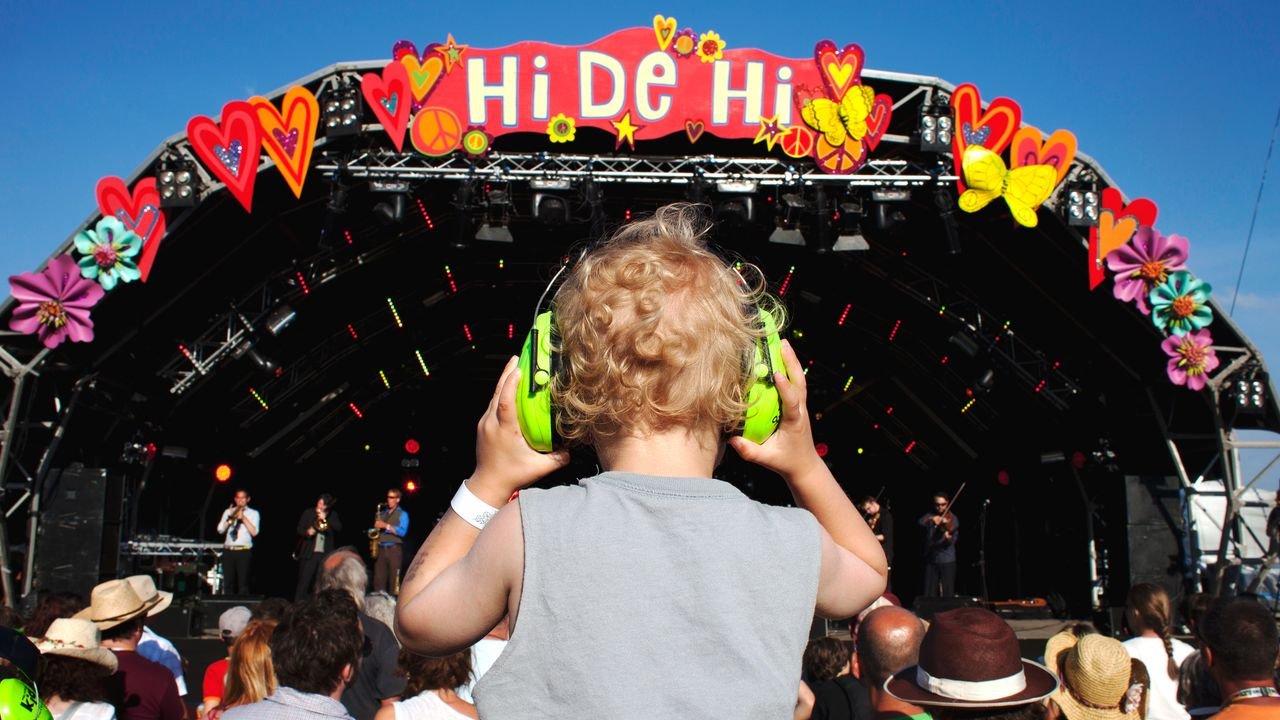
There’s a reason your child covers their ears every time you walk past a construction site. Little ears are sensitive—and they’re especially vulnerable in the presence of fireworks, race cars, and screaming Taylor Swift fans. According to the Centers for Disease Control and Prevention, prolonged exposure to noise above 85 decibels (dB)—the typical volume of a hair dryer—can cause permanent hearing damage, even for adults. Now imagine your child at a Fourth of July firework festival, where pyrotechnics displays can top 150 dB, and you understand why packing ear protection is just as crucial as sunscreen and snacks.
“Our ears are always on,” says Dr. Brian J. Fligor, a pediatric audiologist, author of Understanding Childhood Hearing Loss, and president of Tobias & Battite Hearing Wellness in Boston. “Hearing is crucial for our language development and navigation of the world. That’s why we must protect children’s hearing from birth.”
The good news? Today’s earmuffs—over-the-ear headsets that help block noise—are lightweight, comfortable, and stylish enough that most kids won’t put up a fight over wearing them. They’re also designed to lower the decibel level without muffling or distorting sound entirely. (The goal is volume reduction, not total silence.)
Dr. Fligor advises using protection any time an event is loud enough to startle a child or requires shouting in order to be heard. He also recommends it when riding ATVs, snowmobiles, or other powersport vehicles where engines are not particularly well-muffled. And while hearing protection is not necessary on commercial flights, he absolutely recommends muffs for smaller bush and prop planes, or when attending a jet flyover show. If you’re not sure how to gauge the noise risk in any given situation, there’s an app for that: Decibel X sound meter for iOS and Android offers a real-time frequency analyzer for spot checks.
We asked Dr. Fligor, a father of four, along with other travel-savvy parents about the muffs that work best for their kids and why. Below, the best kid-approved picks for the ultimate ear protection.
FAQ:
What should I look for to find the best ear protection for kids?
Aim for a minimum noise reduction rating (NRR) of 22 to 27 dB for general use, says Dr. Fligor. For especially loud environments—like fireworks shows or racing events—higher is better.
What ages need ear protection?
Exposure to loud noise—anything over 85 dB—can cause permanent hearing damage in children and adults alike, which is why it’s so essential to protect our hearing from birth onward. Proactive protection for kids is especially important because they are less likely to self-regulate and move away from noise if it gets too loud.
Which type of ear protection is better for kids: earplugs or earmuffs?
For babies, toddlers, and grade schoolers, over-the-ear muffs are the safest and easiest option. They’re more comfortable, stay in place better, and don’t pose a choking hazard the way earplugs might. Dr. Fligor advises against using earplugs for children until they are old enough to report accurately on their comfort and effectiveness, typically around age seven or older. For tweens and teens, high-fidelity earplugs like Loop or Etymotic work well because they dampen volume without distorting sound (ideal for concerts).
How can I tell if the ear protection fits correctly?
“Earmuffs should form a snug but gentle seal around the ears without any gapping,” says Dr. Fligor. That means the cups are large enough to fit around the entire ear— including the flap of cartilage around the edge, called the pinna—and sit along the jaw. If they slip forward or the ears poke out, it’s not tight enough. If they leave indentations or the child complains about pressure, it’s too tight. To double check the fit, ask your child to shake their head while wearing them: If the earmuffs shift easily or slide off, they’re too loose.
Solo Travellers
Renting a Camper Van for a Road Trip of Stargazing, Cook Outs, and Red Rock Hikes
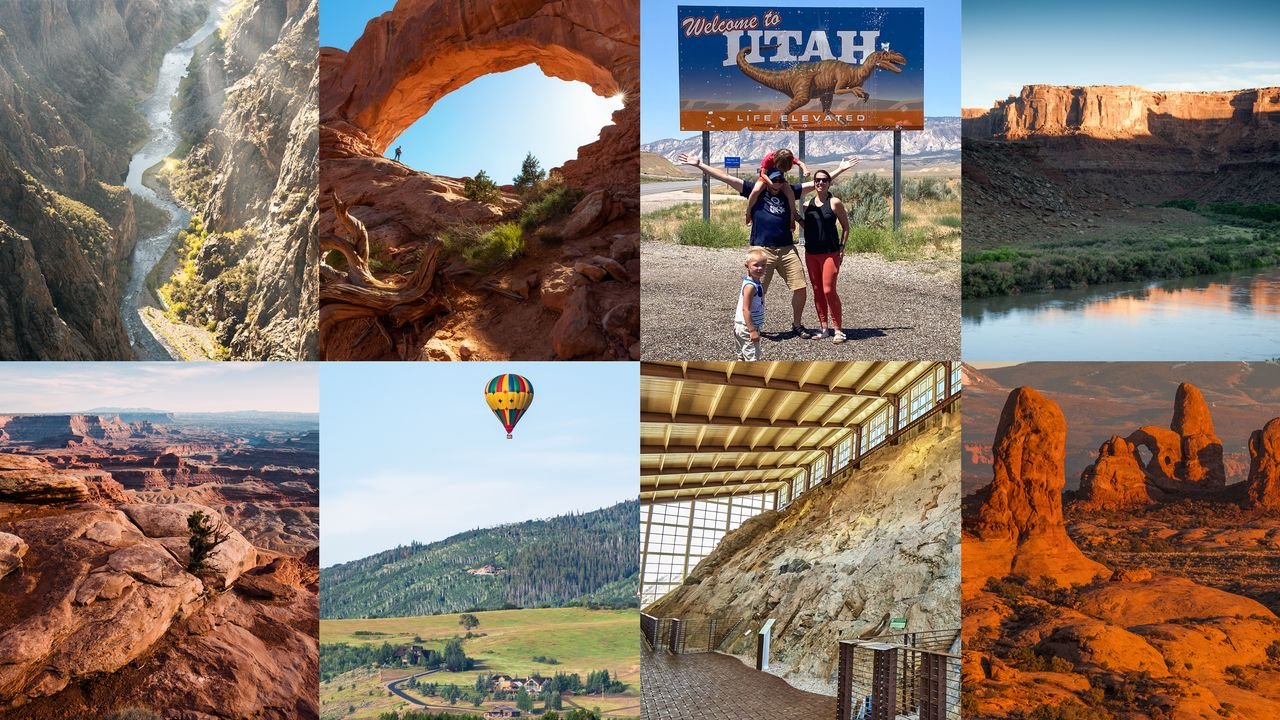
For Jo Piazza and Nick Aster, a camper van trip through the national parks of Colorado and Utah wasn’t just a summer escape—it was a way to reconnect with the adventures they loved pre-kids. “It was time for a trip out west,” Jo says. “We’d visited a lot of these national parks when we lived in San Francisco, but now it was about showing our kids—Charlie, 5, and Beatrix, 3—what makes these places so special.”
The couple, who live in Philadelphia and were expecting their third child at the time (Eliza, now born), mapped out a 10-day loop that started and ended in Denver. Along the way, they visited Rocky Mountain National Park, Steamboat Springs, Dinosaur National Monument, Moab, Arches, Canyonlands, Black Canyon of the Gunnison, and Breckenridge. “It was a bit of an epic romp,” Jo laughs. Here’s how they spent their family vacation—and how much it cost.
Why rent a camper van?
Pregnant, outdoorsy, and realistic about the physical demands of camping with two small kids, Jo knew she needed more than a tent. “Sleeping on the ground just wasn’t going to cut it,” she says. “A van gave me a good place to sleep—and full disclosure, Nick often slept out in the tent with the kids to give me a bit of luxury.”
They rented their “cabin camper” through Outdoorsy—a fully tricked-out truck with a massive cap in the back that felt like a log cabin on wheels. “People commented on it everywhere we went,” Jo says. “We’d get high fives, people asking to take pictures. At one point, someone said, ‘Hey man, we saw you in Canyonlands two days ago! That thing is awesome.”
Planning a flexible route around national parks
Unlike their usual meticulously planned vacations, this one was intentionally open-ended. “We had a general loop in mind,” Jo explains. “We knew we wanted to hit Rocky Mountain right away since it’s so close to the airport, and we knew Charlie would go bananas for Dinosaur. But the rest we figured out as we went. That’s the beauty of traveling by van—you don’t need to lock in hotels every night.”
This flexibility came in handy during a July heatwave in Moab. “We broke up the camping with a stay at the super-unhip Marriott,” Jo says. “It had a fake red rock pool and a mini water park. It flew in the face of the National Park ethos, but with 100-degree heat and two little kids, we just leaned in. They loved it.”
Top highlights for parents and kids
The kids’ favorite moments weren’t always the ones Jo and Nick would’ve picked, but they rolled with it. “They’re still talking about the pool in Moab and the fossil quarry at Dinosaur National Monument,” Jo says. “Also, they were weirdly into how much attention the van got.”
-

 Brand Stories2 weeks ago
Brand Stories2 weeks agoBloom Hotels: A Modern Vision of Hospitality Redefining Travel
-

 Brand Stories1 week ago
Brand Stories1 week agoCheQin.ai sets a new standard for hotel booking with its AI capabilities: empowering travellers to bargain, choose the best, and book with clarity.
-

 Destinations & Things To Do2 weeks ago
Destinations & Things To Do2 weeks agoUntouched Destinations: Stunning Hidden Gems You Must Visit
-

 Destinations & Things To Do1 week ago
Destinations & Things To Do1 week agoThis Hidden Beach in India Glows at Night-But Only in One Secret Season
-

 AI in Travel2 weeks ago
AI in Travel2 weeks agoAI Travel Revolution: Must-Have Guide to the Best Experience
-

 Brand Stories4 weeks ago
Brand Stories4 weeks agoVoice AI Startup ElevenLabs Plans to Add Hubs Around the World
-

 Brand Stories3 weeks ago
Brand Stories3 weeks agoHow Elon Musk’s rogue Grok chatbot became a cautionary AI tale
-

 Asia Travel Pulse4 weeks ago
Asia Travel Pulse4 weeks agoLooking For Adventure In Asia? Here Are 7 Epic Destinations You Need To Experience At Least Once – Zee News
-

 AI in Travel4 weeks ago
AI in Travel4 weeks ago‘Will AI take my job?’ A trip to a Beijing fortune-telling bar to see what lies ahead | China
-

 Brand Stories4 weeks ago
Brand Stories4 weeks agoChatGPT — the last of the great romantics





